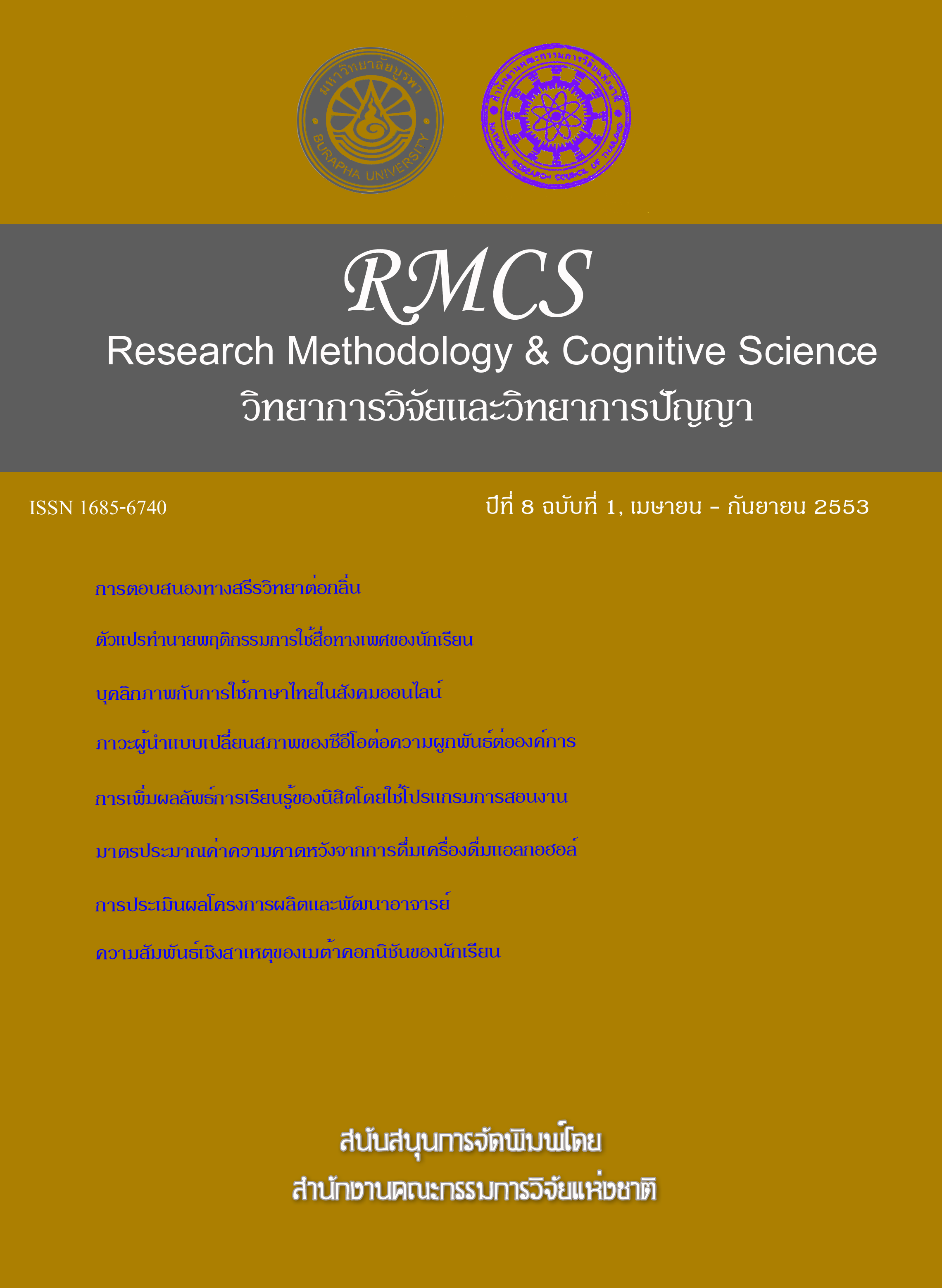การพัฒนามาตรประมาณค่าความคาดหวังจากการดื่มเครื่องดื่มแอลกอฮอล์
Main Article Content
Abstract
Development of the Drinking Expectancy Rating Scale
The objectives of this study were 1) to construct a drinking expectancy rating scale; 2) to verify the construct validity of the rating scale; and 3) to derive norms for the rating scale. The drinking expectancy rating scale was based on the research of Lee and others (2003): Negative Consequences of Drinking, Increased Confidence, Increased Sexual Interest, Cognitive Enhancement, and Tension Reduction. The sample consisted of 1,350 undergraduate students of Burapha University in Chon Buri Province, in the academic year 2009. Descriptive statistics were obtained by means of SPSS; Scale quality was determined by Lertap 5; and LISREL 8.50 was used for second order confirmatory factor analysis. The major findings were: 1. The items of the drinking expectancy rating scale were found to have content validity. The drinking expectancy rating scale was composed five factors: Negative Consequences of Drinking (6 items), Increased Confidence (9 items), Increased Sexual Interest (7 items), Cognitive Enhancement (6 items), and Tension Reduction (7 items). Item – to – scale correlations ranged from .55 to .92; scale reliability was .92 for the 35 items. 2. The construct validity of the drinking expectancy rating scale was confirmed by alignment with the criterion; with Chi – square goodness of fit test value 375.68; p = .07, df = 336, GFI = .95, AGFI = .91, and CFI = 1.00. 3. The norms of the drinking expectancy rating scale were divided into three levels; percentile rank from 78 above indicating high level of drinking expectancy; percentile rank from 24 to 77.9 indicating normal drinking expectancy; and percentile rank lower than 24 indicating low drinking expectancy.

